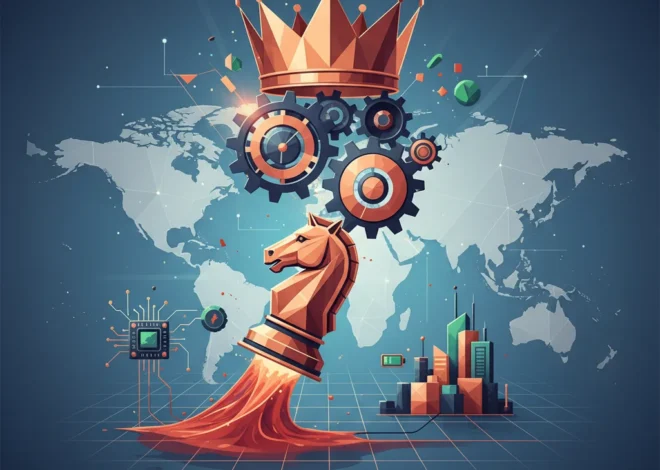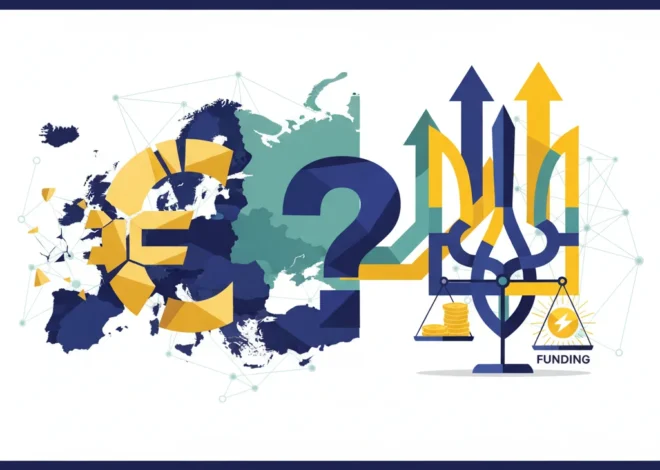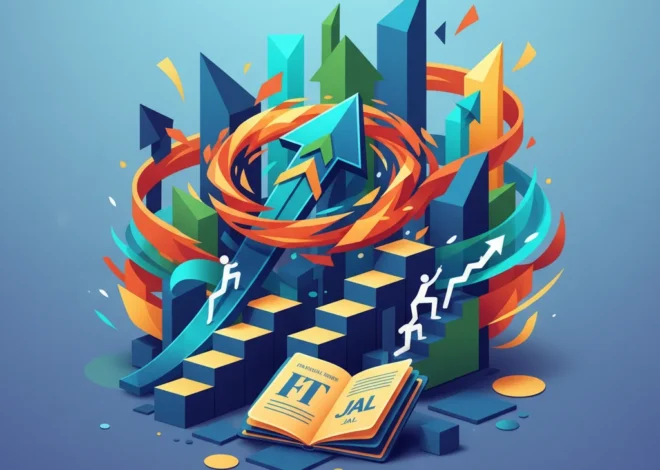
Truce on a Knife’s Edge: Decoding the Economic Tremors of Middle East Instability
In the intricate dance of global finance, information is the currency that matters most. A single piece of news, seemingly minor in the grand scheme of a conflict, can trigger significant market tremors. This was starkly illustrated recently when the Israeli military announced that the remains of a fourth person found in Gaza, initially thought to be a hostage, were not one of those held by Hamas. This forensic detail, reported by the Financial Times, does more than just deepen a human tragedy; it injects a potent dose of uncertainty into an already fragile truce, sending ripples far beyond the immediate region and directly into the world of finance, investing, and global economics.
For investors and business leaders, understanding the transmission mechanism from a geopolitical headline to a portfolio’s bottom line is critical. The situation in Gaza is a live case study in how modern conflicts, amplified by the speed of information, create a complex risk matrix that impacts everything from the stock market to long-term economic policy. This single, somber update underscores the precarious nature of the negotiations, reminding markets that the path to stability is non-linear and fraught with unpredictable developments. It highlights a core tenet of modern trading: markets can price for bad news, but they struggle to price for persistent, unresolved uncertainty.
The Anatomy of Uncertainty in Financial Markets
Geopolitical risk is often misunderstood as a simple trigger for market downturns. In reality, its primary effect is the expansion of volatility and the widening of risk premiums. When a truce is perceived as fragile, investors demand higher returns to compensate for the elevated risk of holding assets connected to the region, or even assets globally that are sensitive to conflict. The news regarding the hostage identification serves as a micro-catalyst, forcing a recalibration of these premiums.
Immediately, we see an impact on local assets. The Israeli shekel (ILS) and the Tel Aviv Stock Exchange (TA-35) become barometers of investor sentiment. Any news that suggests a protraction of the conflict or a breakdown in talks can lead to capital outflows and a “flight to safety,” typically towards the US dollar. According to analysis from major financial news outlets, the shekel has shown significant volatility since the conflict began, reacting sharply to developments related to the truce and hostage negotiations. This isn’t just a local phenomenon; it’s a signal to the global investing community about the perceived stability of the entire region.
This uncertainty has a quantifiable impact on the broader stock market. The CBOE Volatility Index (VIX), often called the market’s “fear gauge,” tends to spike during periods of intense geopolitical stress. While a single piece of news might not cause a dramatic VIX surge on its own, a series of such events contributes to a sustained higher baseline of fear, making equity markets more susceptible to sharp sell-offs. This environment challenges traditional trading models and requires a more nuanced approach to risk management.
Ripples Across the Global Economy: From Oil Prices to Supply Chains
While the direct financial impact is most acute regionally, the secondary effects on the global economy are far-reaching. The Middle East remains the world’s most critical hub for energy production and transportation. The stability of this region is directly linked to the price of oil and gas, which forms a foundational input for the global economy.
A fragile truce that could collapse at any moment raises the specter of a wider regional conflict. Such an escalation could threaten crucial maritime chokepoints like the Strait of Hormuz and the Suez Canal, through which a significant portion of the world’s oil and goods transit. Even a minor disruption can cause shipping insurance rates to skyrocket and force vessels to take longer, more expensive routes. This directly impacts supply chains, increasing costs for businesses and fueling inflationary pressures for consumers worldwide. The World Bank has warned that a major escalation in the Middle East conflict could push oil prices into “uncharted waters,” potentially leading to a “dual shock” for the global economy, which is already grappling with the effects of the war in Ukraine.
This complex interplay complicates the mission of central banks. If energy and shipping costs rise, it fuels inflation, forcing institutions like the U.S. Federal Reserve and the European Central Bank to consider maintaining higher interest rates for longer. This tightening of monetary policy, in turn, can slow down economic growth, creating a difficult balancing act between controlling inflation and avoiding a recession. Therefore, a development in Gaza is not isolated; it becomes a critical data point in the decision-making of global banking and economic policymakers.
Technology’s Role: A Double-Edged Sword in Modern Conflict Finance
The intersection of this conflict with modern technology adds another layer of complexity, particularly in the realm of financial technology (fintech) and blockchain. These technologies are playing a dual role in the current landscape. On one hand, fintech innovations are being deployed to enforce sanctions, track the financing of terrorist organizations, and facilitate the transparent distribution of humanitarian aid. Advanced algorithms can analyze vast datasets to identify and flag suspicious transactions, making it harder for illicit funds to move through the traditional banking system.
On the other hand, the very same decentralization that powers innovation can be exploited. Cryptocurrencies and blockchain technology offer a potential avenue for non-state actors like Hamas to bypass the global financial system. While the transparency of public blockchains can aid investigators, the rise of privacy coins and decentralized mixing services presents a significant challenge to regulators and intelligence agencies. This creates a new frontier in economic warfare, where the battle is fought not just on the ground but also on the digital ledgers that underpin the future of finance. Understanding this dynamic is crucial for anyone involved in the financial technology sector, as the regulatory landscape is likely to evolve rapidly in response to these threats.
A Historical Lens on Geopolitical Investing
To understand the potential market trajectory, it’s useful to look at historical precedents. While every conflict is unique, markets often follow recognizable patterns in response to geopolitical shocks: an initial sharp sell-off, a flight to safe-haven assets like gold and U.S. Treasury bonds, and an eventual recovery as the situation is priced in or de-escalates. However, the duration and depth of the downturn are highly variable.
The following table provides a snapshot of how key assets have reacted during major geopolitical events over the past 50 years. It illustrates the typical short-term “shock” response and highlights the resilience of diversified portfolios over the long term.
| Geopolitical Event | Initial S&P 500 Reaction (Peak to Trough) | WTI Crude Oil Price Spike | Gold Price Reaction |
|---|---|---|---|
| Yom Kippur War / 1973 Oil Embargo | -48% (over 21 months) | ~+300% | Significant Rally |
| Gulf War (1990-91) | -17% (over 3 months) | ~+110% (briefly) | Moderate Rally |
| 9/11 Attacks (2001) | -12% (in 5 trading days) | Brief Spike, then Fell | Initial Spike |
| Russia-Ukraine Invasion (2022) | -13% (over 2 months) | ~+60% (to over $120/barrel) | Rally to near all-time highs |
This historical data provides valuable context. The initial reaction is almost always negative for equities and positive for oil and gold. However, the data also shows that markets tend to recover. For the long-term investor, reacting emotionally to headlines is often a detrimental strategy. The key takeaway from an economics perspective is that while geopolitical shocks create significant short-term volatility, their long-term impact on diversified portfolios is often less dramatic than the headlines suggest, unless the event leads to a permanent structural shift in the global economy, such as the 1973 oil crisis.
Conclusion: Navigating a New Era of Interconnected Risk
The fragile truce in Gaza, tested by harrowing details like the misidentification of a hostage’s remains, is more than a regional crisis. It is a powerful illustration of the interconnected nature of our modern world, where events in one corner of the globe can have immediate and significant consequences for global finance, economics, and business. For investors and corporate leaders, the key is not to predict every outcome but to build resilience.
This means stress-testing supply chains for regional disruptions, maintaining a diversified investment portfolio that can weather volatility, and focusing on long-term strategy over short-term, headline-driven trading. The keywords that will define success in this environment are not just `finance` and `investing`, but also diligence, diversification, and a deep understanding of the complex relationship between global events and market forces. The era of treating geopolitical risk as a distant, tail-risk event is over. It is now a central, ongoing variable that must be integrated into every aspect of financial and economic analysis.


